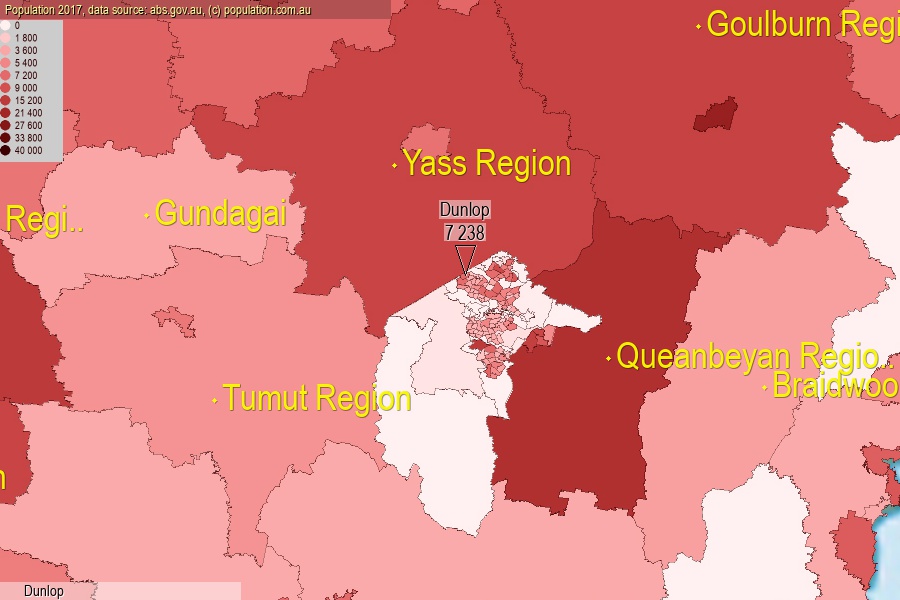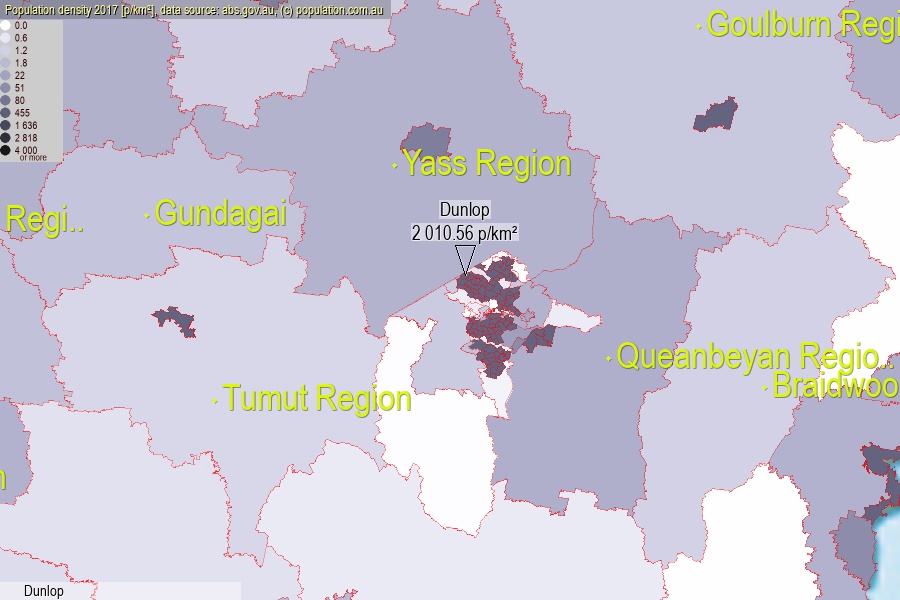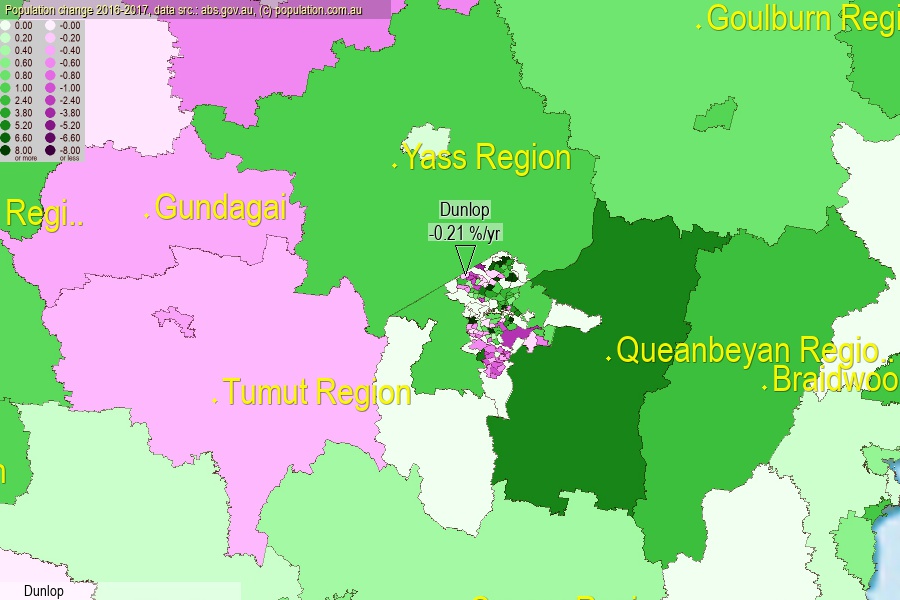 population.com.au
population.com.auLast official estimated population of Dunlop (as Statistical Area Level 2) was 7 238 people (on 2017-06-30)[2]. This was 0.03% of total Australian population and 1.727% of ACT population. Area of Dunlop is 3.60 km², in this year population density was 2 010.56 p/km² . If population growth rate would be same as in period 2016-2017 (-0.21%/yr), Dunlop population in 2025 would be 7 119. [0]



Click to enlarge. Dunlop is located in the center of the images.
Population [people], population density [p./km²] and population change [%/year] [2]
View borders » (new window) [4]
[1991-1992] 0.00 %/Yr.
[1992-1993] 0.00 %/Yr.
[1993-1994] 0.00 %/Yr.
[1994-1995] 0.00 %/Yr.
[1995-1996] +121.52 %/Yr.
[1996-1997] +37.76 %/Yr.
[1997-1998] +28.10 %/Yr.
[1998-1999] +31.86 %/Yr.
[1999-2000] +29.57 %/Yr.
[2000-2001] +24.05 %/Yr.
[2001-2002] +29.30 %/Yr.
[2002-2003] +25.97 %/Yr.
[2003-2004] +15.14 %/Yr.
[2004-2005] +9.46 %/Yr.
[2005-2006] +6.40 %/Yr.
[2006-2007] +9.16 %/Yr.
[2007-2008] +2.03 %/Yr.
[2008-2009] +3.38 %/Yr.
[2009-2010] +3.42 %/Yr.
[2010-2011] +2.22 %/Yr.
[2011-2012] +0.15 %/Yr.
[2012-2013] -0.01 %/Yr.
[2013-2014] -0.07 %/Yr.
[2014-2015] -0.21 %/Yr.
[2015-2016] -0.07 %/Yr.
[2016-2017] -0.21 %/Yr.
[0] Calculated with linear interpolation from officially estimated population
[1] Read more about SA2 and Australian Statistical Geography Standard (ASGS) on abs.gov.au
[2] Population data from Australian Bureau of Statistics (Population and density: 2017; change: 2016-2017)
[3] Digital Boundaries: Australian Statistical Geography Standard (ASGS) 2016.
[4] Border coordinates are simplifyed using Ramer-Douglas-Peucker algorithm.